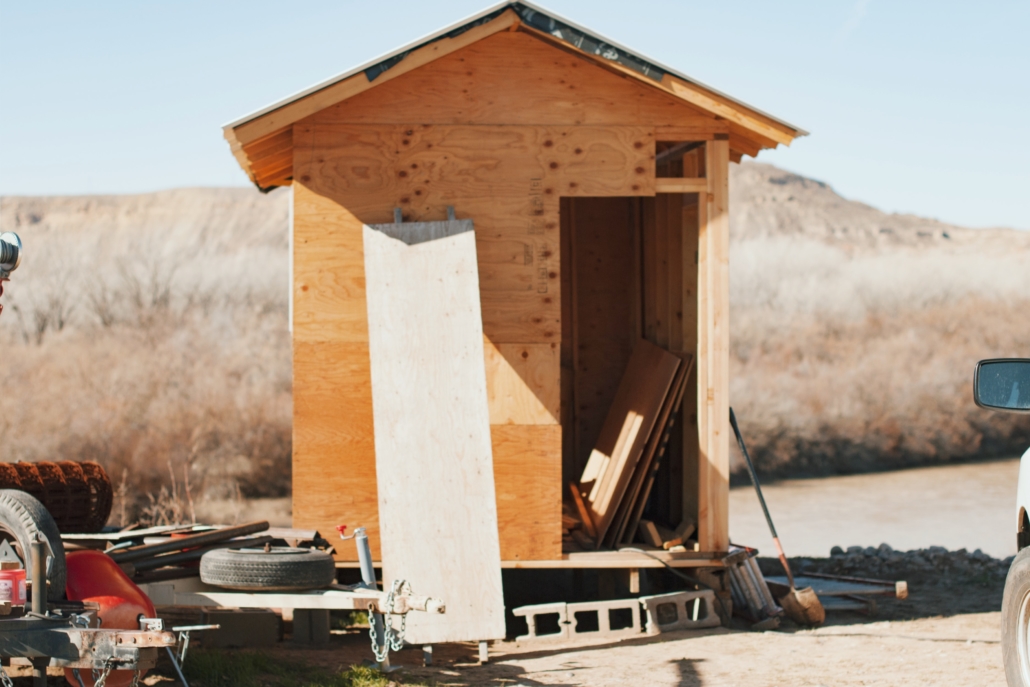Property Management Focus – November
Merry Christmas from Harcourts
To our valued landlords, Harcourts wish you a safe and peaceful festive season.
In warm appreciation of your support during the past year, we extend our very best wishes to you and your loved ones. Merry Christmas!
Alternative Accommodation for Tenants?
There is a misconception that when a property is damaged, either due to a natural disaster or flood or fire, or another event, and a property cannot be lived in, either for a short period or an extended period, that the landlord is responsible for providing alternate accommodation for the tenant. This is not the case.
If a property is uninhabitable, the landlord is not responsible for finding alternative accommodation for the tenant, however they would be encouraged to assist if they are able. What a landlord can do, is often determined by their insurance policy coverage.
Many landlord insurance policies will provide alternative accommodation for tenants, so it pays to check and if the cost is
covered, then it is recommended to provide the tenant with alternative accommodation.
Different insurance companies have different policies, with different limits they will pay and conditions that must be met. Some insurers provide a ‘Landlord Policy’, and others will have a home policy with a landlord’s optional extras or extensions that are often tailored to a client’s needs.
First and foremost, we encourage property owners to check if they have landlords’ insurance cover in their homeowners or business policy.

☑ Check if landlords’ insurance cover is included
If not, why not? At a small additional cost homeowners can add landlords cover to their policy. If clients are unsure, we recommend that clients contact their insurer or insurance broker to enquire for more information.
☑ Contact Insurer or Insurance Broker for further enquiries
Ensure that there is a current residential tenancy agreement in place between policy holders and their tenants.
☑ Current residential tenancy agreement in place (in writing)
What are landlords covered for and why do I need it?
A landlord’s cover is similar to a house policy in several ways, it was designed to ease the financial burden of loss or damage arising from the additional risks when renting out a property.
Some key risks included under landlord policy coverage are:
- Intentional acts, vandalism, or theft by tenants.
- Loss of rent when tenants need to move out due to damages clients need to claim on, or if a tenant abandons the property, or if the landlord need to evict a tenant.
- Contamination of your home caused by tenants using or manufacturing methamphetamine.
- Landlord contents and furnishings damaged by tenants
What if tenants need to be relocated?
In the event that a tenanted property suffers physical damage, and the property is ‘uninhabitable’, meaning the home:
- is no longer a safe or sanitary place for anyone to occupy; or
- prevented access to the home by order or direction of government or local authorities; or
- it no longer has a functional bathroom or kitchen; or
- has been determined by government, local authorities, or insurer to be uninhabitable due to physical damage to the home or possible future physical damage to the home.
Then, depending on the insurance policy, a landlord may be covered for the cost of providing alternative accommodation for the tenant. There is generally a time limit placed on the length of insured cover (usually until the premises is repaired or up to 12 months, whichever is the lesser).
What if there is no alternative accommodation coverage?
If a landlord’s insurance policy does not cover the cost for alternative accommodation, however, the tenant can relocate themselves and return once the repairs are completed, then the rental payments by the tenants will be temporarily suspended from the date the tenant cannot reside at the property and resumes again when they return back to the property, therefore the landlord isn’t liable for the accommodation costs for the tenant.
If the property is uninhabitable indefinitely or for an extended period of time, then the landlord must give the tenant at least 7 days’ notice to terminate the tenancy, and the tenant can give 2 days’ notice. The rental payments will cease from the date that the property becomes uninhabitable.
If the tenant can continue living at the property, however they cannot access certain areas, then the rental payments should partially abate for that period, reflecting what areas of the premises they are unable to utilise.
Each case will be different, and so will the needs of the tenant. In every case, communication is key so that everyone understands what they are required to do, which is often determined by what the insurer is required to cover. The first place to start in the case of an event, is to speak with the Insurer and be guided by their expertise, and then establish, and where possible, meet the needs of the tenant.
If landlords would like more clarity on their insurance coverage, it is recommended that they contact their insurer or insurance broker for advice.
Unlawful Dwellings
78A Orders of Tribunal relating to unlawful residential premises
(1) This section applies in any matter where the Tribunal, on application by a party or otherwise on the evidence before the Tribunal in respect of any claim within its jurisdiction, determines or declares that the premises are, or were at any material time, unlawful residential premises.
(2) For the purposes of this Act, unlawful residential premises means residential premises that are used for occupation for a person as a place of residence but—
(a) that cannot lawfully be occupied for residential purposes by that person (whether generally or whether for the particular residential purposes for which that person is granted occupation); and
(b) where the landlord’s failure to comply with the landlord’s obligations under section 36 or 45(1)(c), or section 66H(2)(c) or 66I(1)(c), as relevant, has caused the occupation by that person to be unlawful or has contributed to that unlawful occupation.
Different types of unlawful dwellings
Section 78A of the Residential Tenancies Act 1986 (RTA) does not provide examples of what constitutes an unlawful dwelling. However, since these provisions became law as part the RTA 2019 Amendments, there have been many examples of the Tribunal making orders under Section 78A.
Below are eight descriptions of unlawful dwellings:
- A premises that has never had resource nor building consent
- Minor dwelling that never had resource consent
- Minor dwelling that is not consented for sleeping
- Minor dwelling that does not have CCC or COA
- A rental property that does not comply with the Building Act 2004
- A sleepout that has kitchen facilities
- A premises that does not comply with the 1947 Housing Improvement Regulations
- A premise that does not comply with the Building Code

A premises that has never had resource nor building consent
One example of an unlawful dwelling is where a premises has never had a building consent nor a resource consent. In a recent tribunal case, a tenant made a claim against a landlord who rented out a property where all three residences use one letterbox and shared the same rubbish and recycling bin. The tenancy did not have a separate water meter or power meter although it was agreed that the rent would include these outgoings. The tenancy had just one room, containing a lounge and a kitchen. The kitchen had just a sink, a bench, and a portable gas cooker.
Between that ‘living area’ and the bedroom was a glass sliding door. In the bedroom there was a handbasin, shower and toilet but these facilities were only blocked off by a curtain.
The tenant, who was concerned about a sewage smell, made enquires with the Auckland City Council and accessed the property file. The property file contained no mention of the premises that the tenant lived in whatsoever, and the Tenancy Tribunal deemed the premises unlawful.
The landlord, unsuccessfully attempted to claim $1000 in rent arrears because under Section 78A the Tribunal must not order the tenant to pay any rent arrears if the premises is unlawful.
The discretion of Tenancy Tribunal crucial in unlawful dwelling orders
Where appropriate, the Tribunal can order the tenant to not pay the landlord:
• Any money owing in rent arrears
• And any other sum of damages or compensation
What orders can be made under Section 78A?
The Tribunal may also order a landlord who rents out an unlawful dwelling:
- A full rent refund, if the Tribunal is a satisfied the rental property was never consented as a residential premises.
- A partial rent refund if part of the rental property is lacking the necessary consent.
- A work order to remove or rectify any impediment that makes the premises unlawful
- A work order to comply with all requirements in respect of buildings, health, and safety under any enactment
- And exemplary damages of up to $7,200 if the landlord fails to comply with Section 45 (1) (c)
As a final note, even if the tenant does not make an application, the Tenancy Tribunal may make any of the above orders at its own initiative.
The wide range or orders available to the Tenancy Tribunal highlights how seriously the government views unlawful dwellings. Landlords will be held accountable for renting out properties which are either unconsented, non-compliant or expose tenants to health and safety risks. However, an important point to note is that the Tenancy Tribunal can use its discretion under Section 78A.
Unit Titles law changes
Commencement dates for changes to the Unit Titles Act have now been announced.
The Unit Titles (Strengthening Body Corporate Governance and Other Matters) Amendment Act 2022 (the Amendment Act) became law on 9 May 2022. The purpose of the Amendment Act is to provide greater protections for unit owners or prospective buyers.
The changes to the Unit Titles Act will come into force across three key dates:
- Provisions to support remote attendance at meetings will take effect on 9 December 2022.
- Most of the provisions will come into force on 9 May 2023.
- Provisions that require further regulatory development or preparation by the sector will take effect on 9 May 2024.
Gumboot Friday
Over the past few months, alongside hundreds of thousands of kiwis the Harcourts network have pulled together in the most extraordinary way to raise funds and awareness for Gumboot Friday.
In our biggest network collaboration to date, there were sausage sizzles, auction nights, gumboot throwing and other fun activities across New Zealand. The original goal was to raise $138,000 enough to fund 1000 counselling sessions at $138 each but we are delighted to say that Harcourts have smashed this goal and raised $167,652.45 which will pay for 1215 counselling sessions. Bryan Thomson, Managing Director Harcourts New Zealand said ‘The mental health of young kiwis is something we need to address and look after. Harcourts Foundation are incredibly proud to support Gumboot Friday.’
Rental reform package: Regulation, Healthy Homes extension, Methamphetamine levels
22 November 2022
The Government will regulate property managers, consult on an acceptable maximum level of meth residue, and the deadline for Healthy Homes standards has been extended as part of a new package of rental reform.
Regulation
Regulation of property managers is welcomed by Harcourts and as consultation has already happened on the proposals, it’s expected a Bill will be introduced into the House by May 2023. We have previously advised what will be required of property managers when regulation is in place and will update our landlords when the Bill is introduced.
Harcourts offices are already ahead of the game, with many of the proposals already in place in our offices.
Methamphetamine
The Government has also announced it will consult the public on what an acceptable maximum level of methamphetamine residue is for properties as well as at what level those houses need to be decontaminated to, and when tenancies would need to be terminated.
In the proposals, a maximum acceptable level of surface methamphetamine residue is proposed to be set at 15 micrograms per 100 square centimetres, up from the NZ standard of 1.5 micrograms per 100 square centimetres. This would also be the level which a property would need to be decontaminated back to, or below. This is consistent with the findings of Sir Peter’s report and advice from ESR.
Once relevant regulations are in place, landlords must not knowingly rent out premises that are contaminated above the prescribed levels, without decontaminating the premises. To do so is a breach of the Residential Tenancies Act and Landlords will be liable for a financial penalty of up to $4,000.
Harcourts welcomes the certainty on what level of methamphetamine residue requires decontamination.
Healthy homes standards
The Government is extending the deadlines for landlords and Kāinga Ora to comply with the Healthy Homes Standards.
Private landlords will have one more year to comply, making the final compliance date for all private rentals being 1 July 2025, instead of 1 July 2024.
Kāinga Ora and Community Housing Providers will also have an additional year to comply, shifting from 1 July 2023 to 1 July 2024.
From July 2021, landlords who had new or renewed tenancies were required to make sure the rentals met the standards within 90 days. This is now being extended to 120 days.
This applies to private rentals that were not required to comply before 26 November 2022. This means if the tenancy started or renewed on or after 28 August 2022, the landlord now has 120 days to comply with the healthy homes standards.
The deadline extension was deemed necessary due to COVID-19 causing supply chain and delivery disruptions as well as limited workforce challenges.
Harcourts encourages all landlords to meet the healthy homes standards as soon as possible to retain the best tenants at the best possible rental returns.
Section 40 Tenant’s responsibilities
As a continuation of the October edition of the Property Management Focus
newsletter, below are the tenant responsibilities under the Residential Tenancies Act 1986.
Section 40 Tenant’s responsibilities
(1) The tenant shall—
(a) pay the rent as and when it is due and payable under the tenancy agreement; and
(b) ensure that the premises are occupied principally for residential purposes; and
(c) keep the premises reasonably clean and reasonably tidy; and
(ca) comply with all requirements in respect of smoke alarms imposed on the tenant by regulations made under section 138A; and
(d) notify the landlord, as soon as possible after discovery, of any damage to the premises, or of the need for any repairs; and
(e) on the termination of the tenancy,—
(i) quit the premises; and
(ii) remove all his or her goods from the premises; and
(iii) leave the premises in a reasonably clean and reasonably tidy condition, and remove or arrange for the removal from the premises of all rubbish; and
(iv) return to the landlord all keys, and security or pass cards or other such devices, provided by the landlord for the use of the tenant; and
(v) leave in or at the premises all other chattels provided by the landlord for the use of the tenant.
(2) The tenant shall not—
(a) intentionally or carelessly damage, or permit any other person to damage, the premises; or
(ab) cause or permit any interference with, or render inoperative, any means of escape from fire within the meaning of the Building Act 2004; or
(b) use the premises, or permit the premises to be used, for any unlawful purpose; or
(c) cause or permit any interference with the reasonable peace, comfort, or privacy of any of the landlord’s other tenants in the use of the premises occupied by those other tenants, or with the reasonable peace, comfort, or privacy of any other person residing in the neighbourhood.
(3) Where the tenancy agreement specifies a maximum number of persons that may ordinarily reside in the premises during the tenancy, the tenant shall ensure that no more than that number ordinarily reside in the premises at any time during the tenancy.
Note that a breach of some of the responsibilities above are considered unlawful acts and exemplary damages, payable to the landlord, can be awarded by the Tenancy Tribunal. For example, interfering with smoke alarms is an Unlawful Act and the maximum exemplary damages that can be awarded against the tenant is $4,000.







